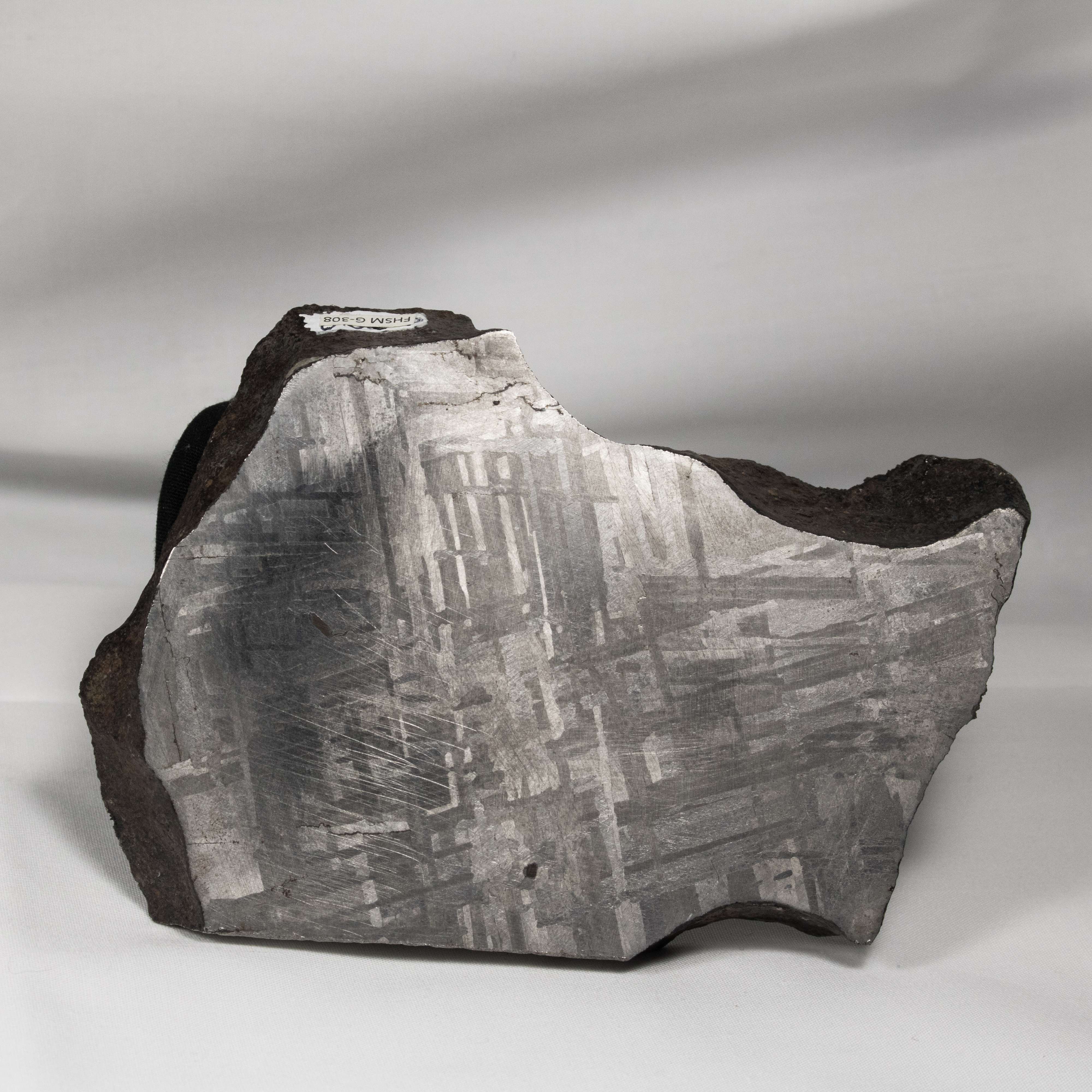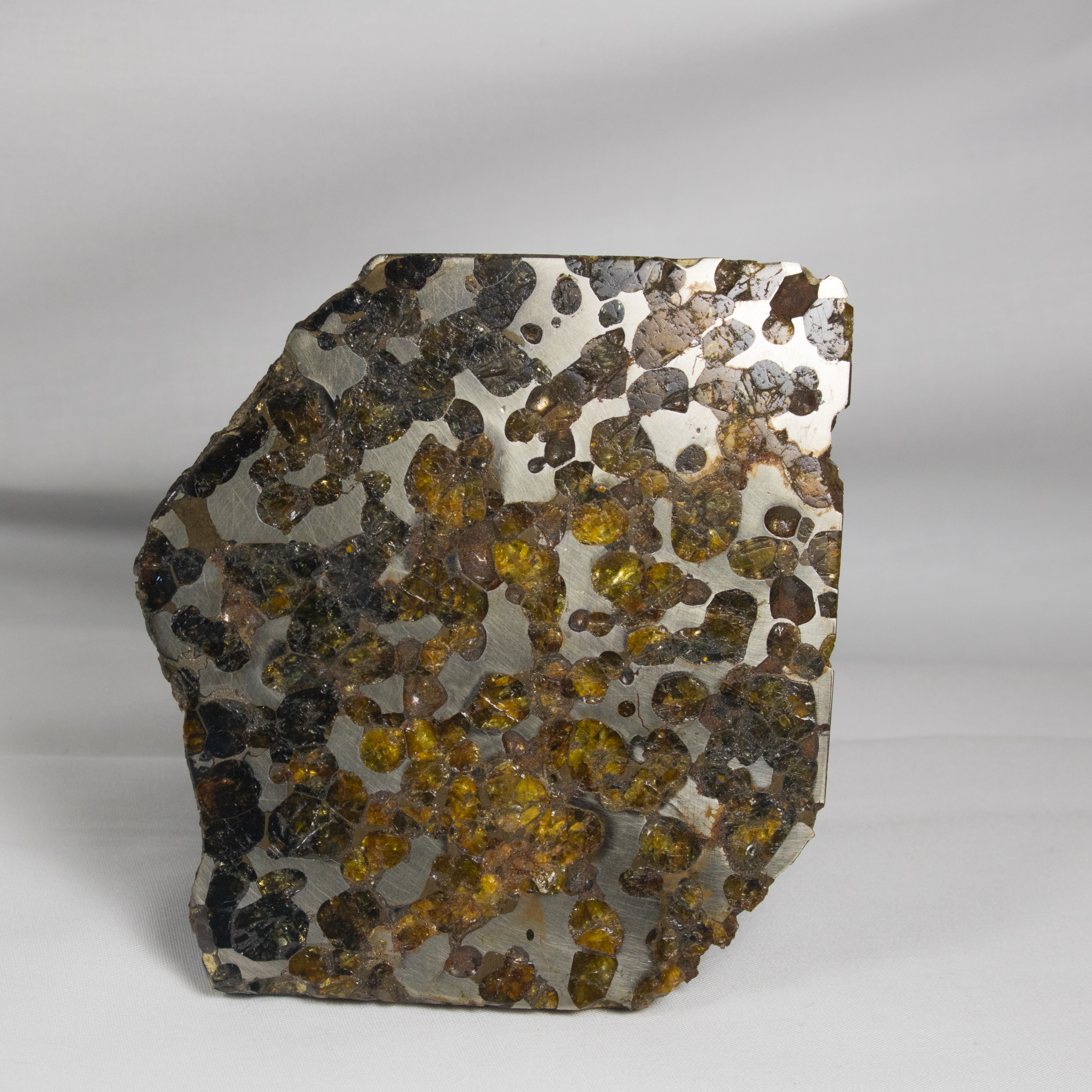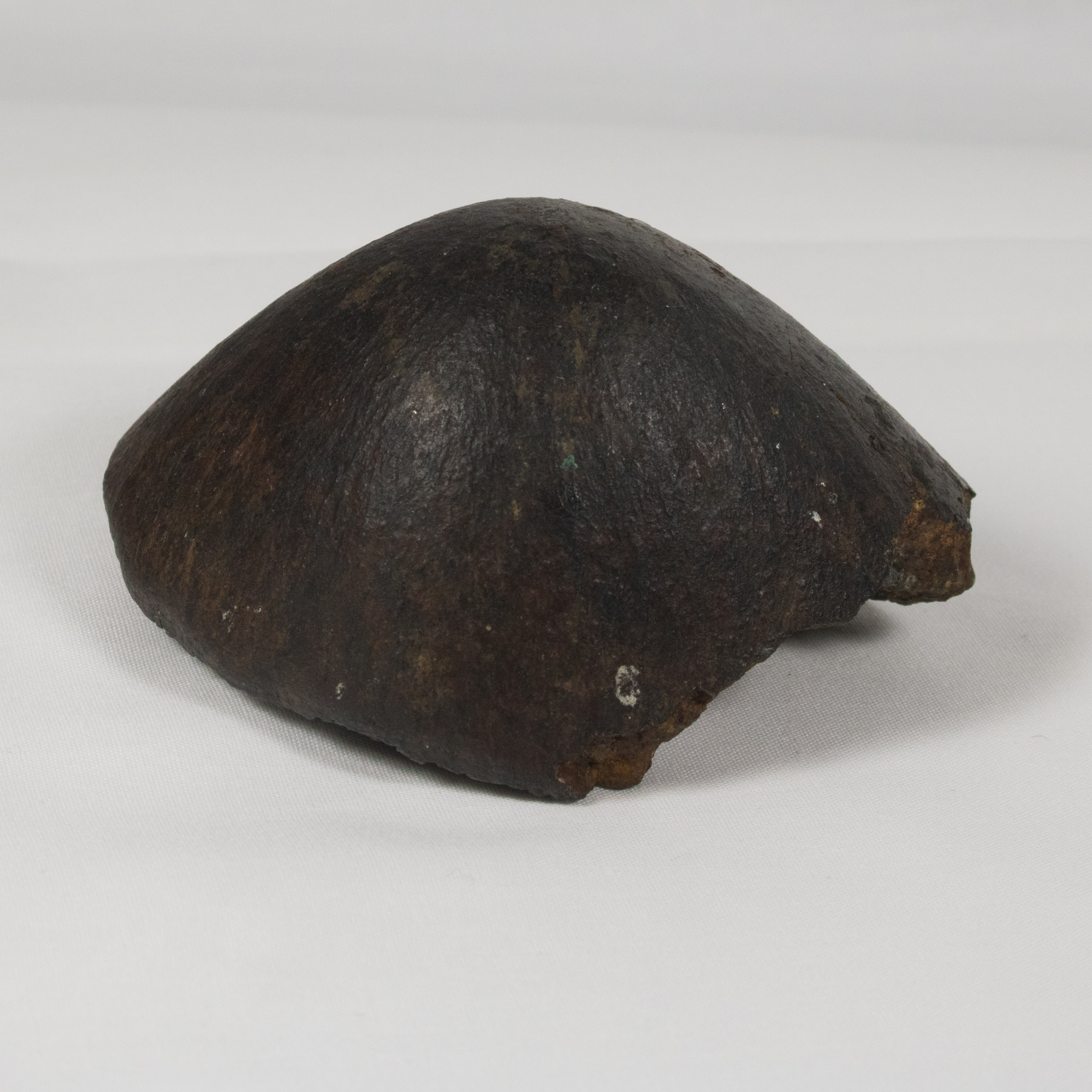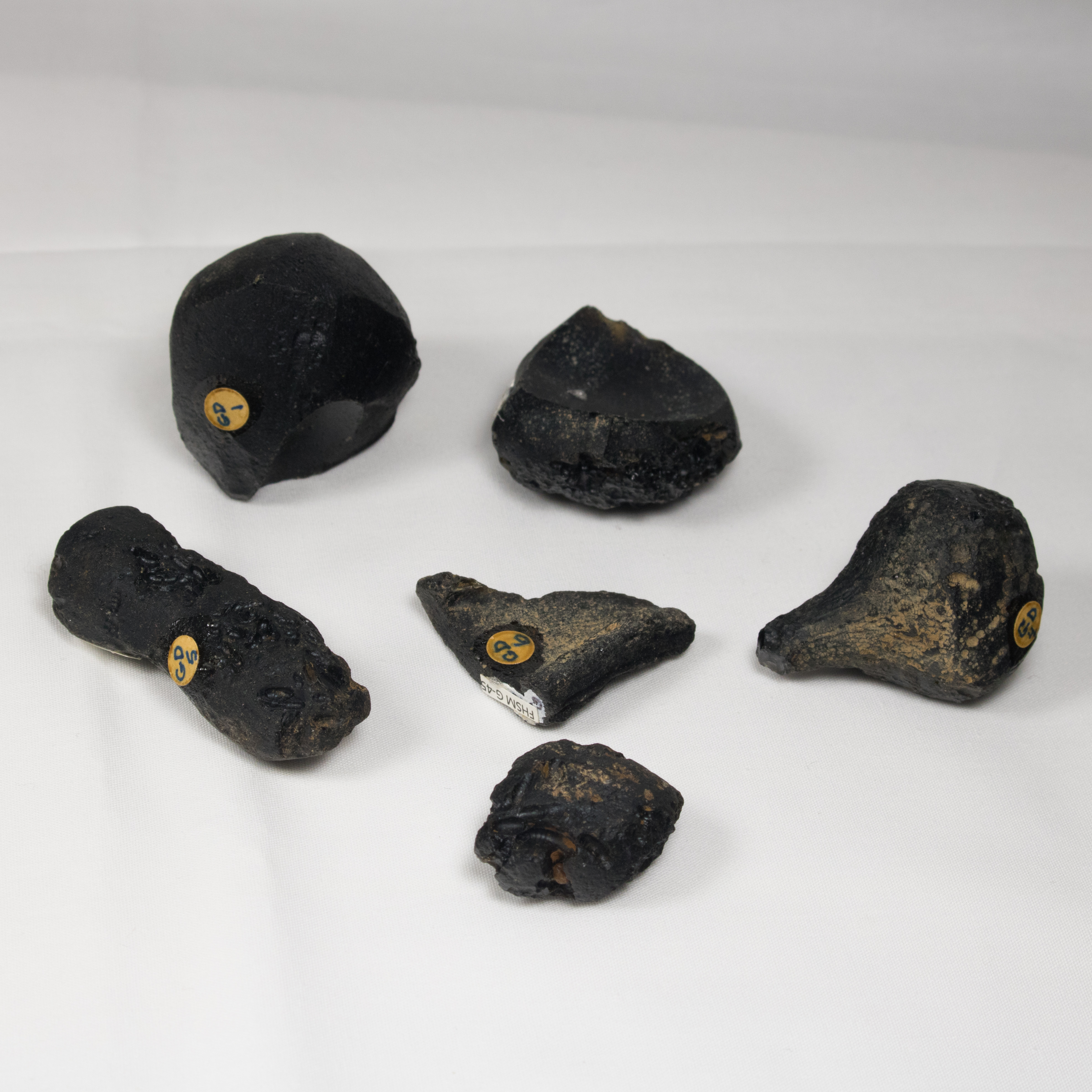Meteorites and Tektites
What is a meteorite?
A meteorite is a stony or metallic rock that falls to the Earth from space.
Many of the smallest meteorites are dust from comets. The larger ones that impact Earth can form huge craters. At the Sternberg Museum, there are currently 186 meteoritic specimens, including meteorites and tektites. Sixty of those specimens are meteorites from the United States of America and over half are from Kansas. To eliminate confusion, meteorites must be verified and named by the Meteoritical Society. Here we highlight the different meteorite types as well as some of the named meteorites in the FHSM Geology Collection.
Meteorite Types
Iron Meteorite
Iron meteorites are composed mostly of nickel and iron and are very dense. They come from the core of asteroids and are rare among meteorites that fall to Earth. Iron meteorites have two mineral phases: taenite and kamacite. When one of these meteorites is cut, polished, and etched in an acid bath, a criss-cross mineral arrangement, called the Widmanstätten pattern, becomes clear. The presence or absence of the Widmanstätten pattern was once used to identify iron meteorites from stony-iron and stony meteorites. The presence of the Widmanstätten pattern means iron meteorites have an average to high nickel content. Today, meteorites are classified based on their nickel content and placed into one of the following structural classes: hexahedrite, octahedrite, and ataxite.

Stony-iron Meteorite
Stony-iron meteorites are made of nickel/iron and silicate minerals. One type of stony-iron meteorites are pallasites – rocks composed of iron-nickel surrounding olivine, a greenish silicate mineral. Another type is mesosiderites which are composed of iron-nickel and basalt with no separation between the metal and rock.

Stony Meteorite
Stony meteorites are the most common and maybe from the surface of a planet. Stony meteorites can be divided into two groups:
- Chondrites, stony meteorites that contain chondrules (millimeter-sized spherical bodies)
- Achondrites, do NOT contain chondrules.

Tektites
When a meteorite hits the Earth, sediment and rock are often melted and ejected into the air. As this melted rock falls, it quickly cools and forms into a glassy rock called a tektite.
